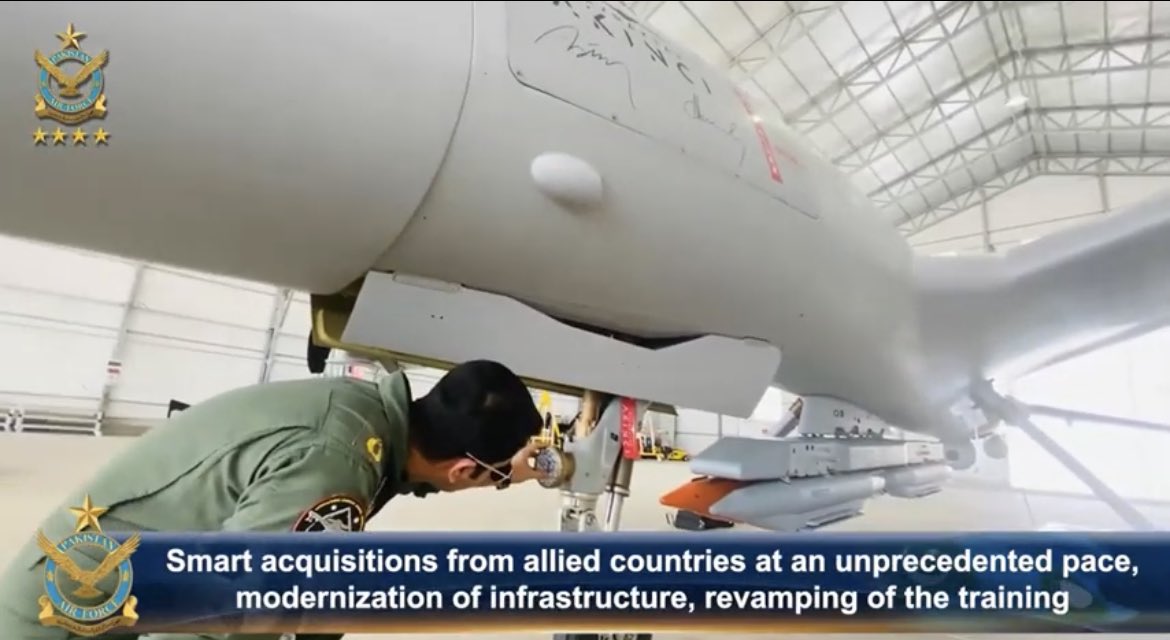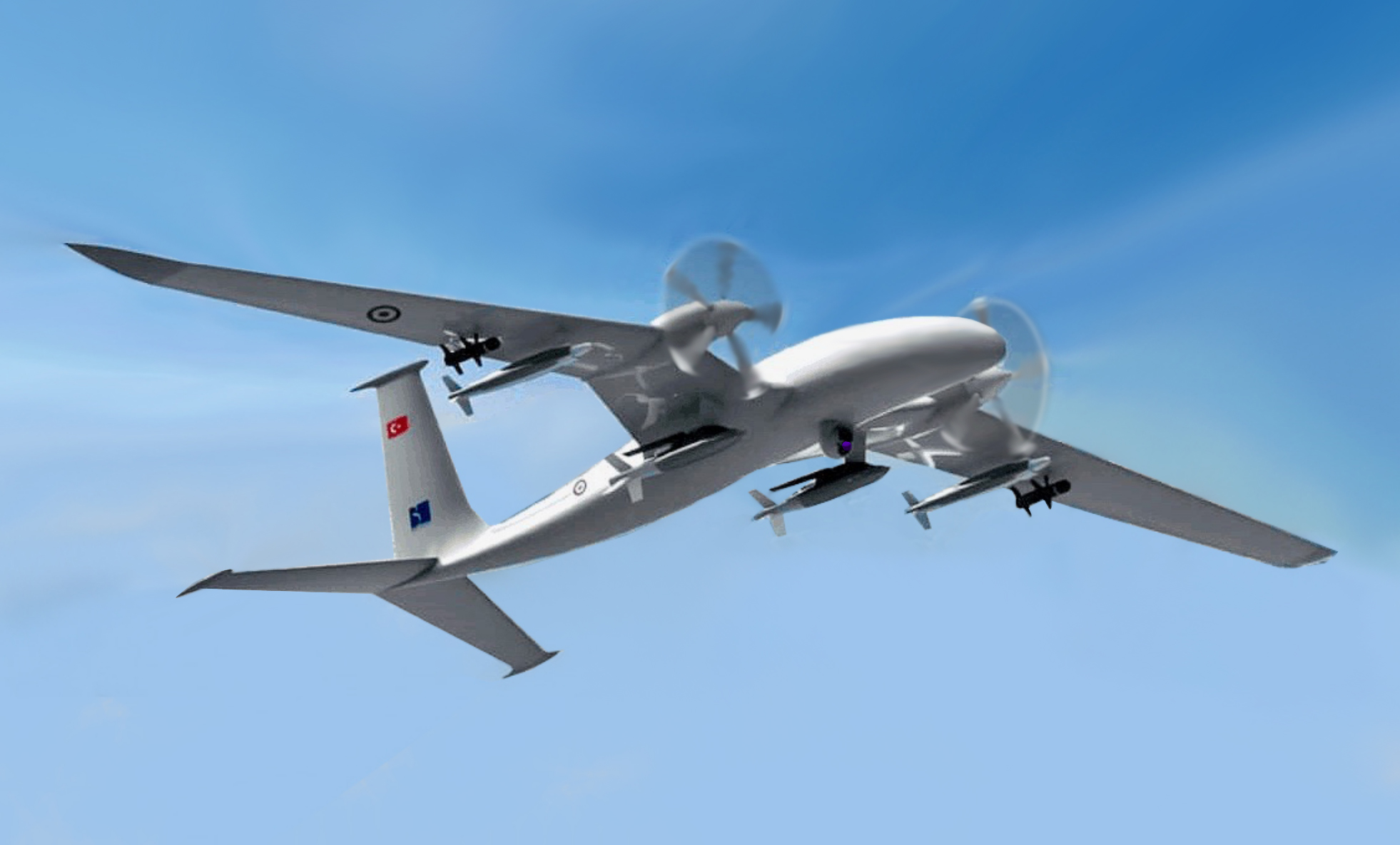Pakistan Air Force (PAF) has completed training on Akinci Drones, the all-new UAV Islamabad bought from one of its most trusted partners, Turkey.
Personnel of the Pakistan Air Force (PAF) completed training to operate the armed unmanned aerial vehicle Bayraktar Akinci from Baykar Tech. This indicates that the Pakistan Air Force’s plans to introduce the UAV are on schedule.
According to a statement released by the drone manufacturer Baykar on October 23, 110 pilots and staff members from three nations had completed the sixth term of the Akinci training program, including Pakistan, Azerbaijan, and Turkiye.
Even though Baykar did not mention the number of grads from Pakistan, an analysis by Janes of photos from the graduation revealed the presence of 44 PAF officials.
Baykar stated that pilots, payload operators, mechanics and engine technicians, operators of electronic and ground control stations, and operators of weaponry were among the graduates.

In early August, a Pakistani online source named ‘Pakistan Defense Blog’ stated that the PAF troops were starting hands-on training on the Akinci drone in an undisclosed location in Turkey.
The blog further mentioned that the drones would enter service with the PAF by 2023, and Islamabad was among several others that had signed contracts for the drone.
A few days ago, on October 19, the Pakistan Air Force’s (PAF’s) Public Relations Department released a video featuring various aircraft and weapon systems within the PAF’s fleet, including the Turkish Akinci combat drone.
Earlier, during an Air Force exercise in late September, Pakistan had flaunted its Bayraktar TB2 drones, medium altitude long endurance UAVs, which have become the most popular and appreciated combat drones in the world after their stellar performance in Ukraine.
In March, Haluk Bayraktar, CEO of Baykar, the firm that manufactures the Bayraktar TB2 and Akinci drones, disclosed that the company had signed two export contracts for the Akinci drone without disclosing the destinations of the drones, their quantity, or price.
Intriguingly, a few days after Bayraktar’s announcement, the PAF’s Public Relations Division published a video that included the Bayraktar and Akinci drones, among other weapon systems, indicating that the PAF had either ordered the two drones or may already be using them.
The news about training on Akinci indicates that the system will soon be available in Pakistan. The relationship between Turkey and Pakistan has strengthened in the last few years, with reports of the two also joining hands to develop a fifth-gen fighter jet that would assume the reputation of the “First Big Fighter Jet of the Islamic World.”
There has been no development on this front, but the defense relationship between the two is evolving.
Akinci Drones For Pakistan
The Akinci, which translates to “Raider” in Turkish, is a high-altitude, long-endurance Unmanned Aerial Vehicle (UAV) created as a replacement for Turkey’s current primary tactical UAV, the TB2 Bayraktar. It is capable of executing air-to-ground and air-to-air attack operations.
Baykar initially created three prototypes, the first of which debuted in December 2019. The first mass-produced Akinci drone’s flight test was finished in May 2021, and the unmanned system was then delivered to the Turkish Armed Forces in August 2021.
The combat drone is 12.2 meters in length, 4.1 meters in height, and 20 meters in width. It has a takeoff weight of 5,500 kilograms, a maximum payload of 1,350 kilograms, and a flight ceiling of 40,000 feet (12,192 meters).
The drone’s sensors include Electro-optic/infrared/laser designator (EO/IR/LD), multi-mode active electronically scanned array (AESA) radar, and signals intelligence (SIGINT) system.
The drone collects and processes data from onboard sensors and cameras using sophisticated AI features. It can fire the Cirit missile, mini smart munition Bozok, long-range anti-tank missile system (L-UMTAS) missile, MK-81, MK-82, and MK-83 guided bombs (JDAM).

The drone can also be armed with Gokdogan and Bozdogan air-to-air missiles, wing-assisted and SOM-A stand-off missiles. Further, the drone can be fitted with different weapon payloads, such as laser-guided smart munitions, missiles, and long-range stand-off weapons.
The Akinci A first gained notoriety when it broke a Turkish aviation altitude record by flying for 25 hours and 46 minutes at 38,000 feet (11.58 kilometers) while towing a 1,360-kilogram payload over a 7,500-kilometer trip. While the Akinci-B model surpassed that mark last month by ascending to a height of 40,170 feet (12.2 kilometers)
The Akinci can additionally serve as a mother ship for drone-swarming assaults. As an illustration, in 2019, Prof. Ismail Demir, the head of Turkey’s Presidency of Defense Industries (SSB), published a simulation of the homegrown “Alpagu” kamikaze drones released by the Akinci drone on his Twitter feed not too long ago.
Once employed by Pakistan, the drone could pose a headache for India, which is already strengthening its defenses along the LoC to ward off drone threats. The Indian Army has reportedly installed quadcopter jammers to protect its military bases from Pakistani drones.
The Turkish-origin drone could be deployed for crucial Intelligence, Reconnaissance, and Surveillance operations and prove to be a significant asset for Pakistan, given that drones are being hailed as the future of all warfare.
- Contact the author at sakshi.tiwari9555@gmail.com
- Follow EurAsian Times on Google News




